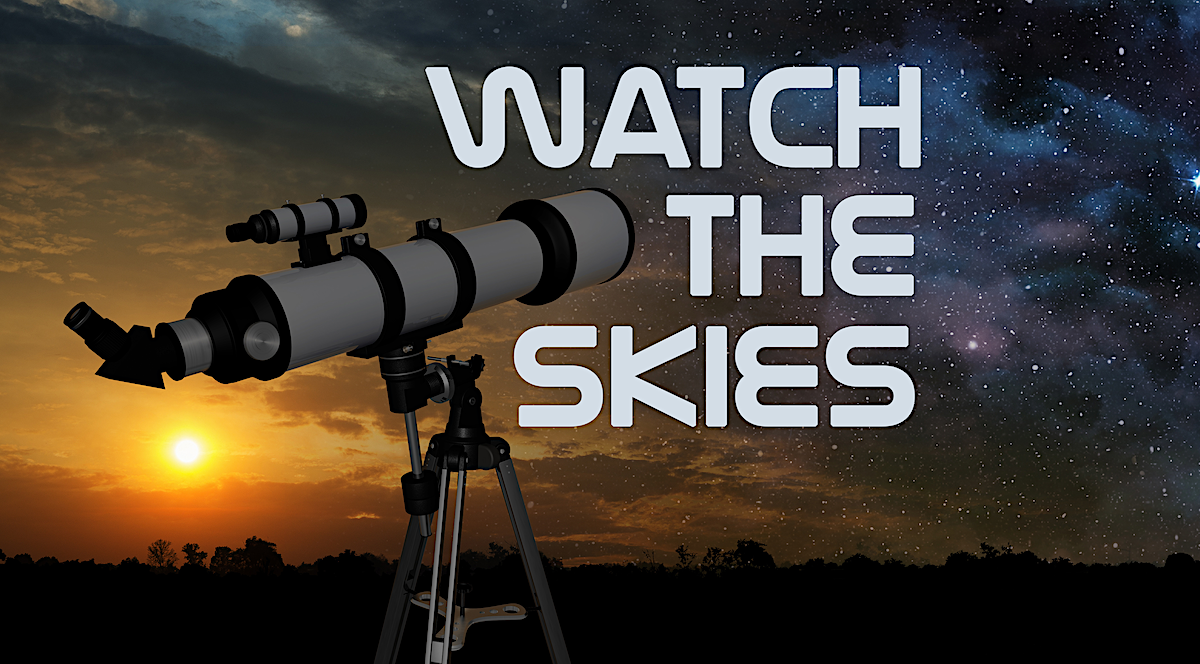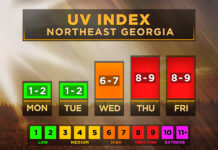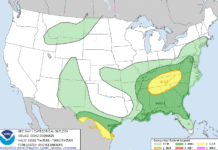
Another fun week of stargazing is on its way. Though there will be some clouds to fight with by mid and late week both Monday and Tuesday look fantastic for taking in a view of the heavens.
The Planets This Week: Venus remains the highlight of the planets shining brightly in the evening twilight. It passed through the Beehive Cluster over the weekend and remains fairly close to it after sunset this week. It is drawing closer to Mars which can be found just above and to the left. They will be drawing closer to each other over the next week and appear closest next Monday evening. Jupiter and Saturn both appear high in the sky during the late-night and pre-dawn hours. The dimmer planets of Uranus and Neptune, both only visible in telescopes or binoculars, are both up during the pre-dawn hours as well.
Naked Eye Object of the Week-Mars: Mars is slowly sinking in the western sky at twilight so if you want to get out and see it now is the time. It won’t be long before it becomes completely obscured by the sun as it moves behind it from our point of view. Named after the Roman god of war, Mars is the 4th planet from the sun and the last of the “rocky” planets. It has been the topic of many a science fiction novel, most notably War of the Worlds written by H.G. Wells. It has also been the object of many NASA missions. The first came back in 1964 when Mariner 4 became the first probe to photograph Mars up close, and the first successful landing occurred just 12 years later in 1976 when Viking 1 made touchdown. The first rover wouldn’t come until 1997 when Sojourner would head out on its mission. Probably the most famous of all the probes and rovers to visit the red planet are Spirit and Curiosity. Both these rovers were launched in January of 2004 and both operated many years beyond their expected lifespan. Opportunity worked for an astonishing 14 years just ceasing operation in 2018.

The planet is very rocky with a thin atmosphere. It has regular dust storms, some of which can be planet-wide, and is the only other planet to contain polar ice caps consisting of frozen water. In its early life, Mars was an active planet like Earth. It had large volcanoes (Olympus Mons is the largest in the solar system) and likely even tectonic plates like the Earth, but it has slowly turned into a “dead” planet with the planet’s core no longer producing a magnetic field. It is still seismically active, though, with “Marsquakes” having been reported by NASA’s InSight lander. Mars also once had surface lakes and rivers, and it is theorized that some streaks that appear on the surface even today could come from remaining water leaking to the surface. Regardless, the atmosphere is too thin to allow it to exist for long, though the frozen polar ice caps contain enough water to cover the whole planet in over 30ft of water. These polar ice caps can be seen with a medium-sized telescope when the planet is closest to Earth, but right now a stronger telescope would be required.

Mars’ nickname is “the red planet” because it appears red. This is because the soil contains lots of iron oxide, commonly referred to here on Earth as rust. The planet has quite literally rusted which gives it its red color. Rovers that have dug into the soil find a lighter color, though still most decidedly red, just beneath the surface. Mars also has two small moons, both significantly smaller than Earth’s. They are called Phobos and Deimos and are both irregularly shaped moons, much more akin to a large asteroid than a spherical satellite.
Humans may one day set foot on Mars. SpaceX is determined to land and colonize the planet, but that day likely lies far into the future. For now, we will continue to gaze at it from afar. Just step outside your doorstep during late twilight and take a peek. It can be found very close to Venus this week after sunset.

Telescope Object of the Week – The Dumbbell Nebula: Last week we took a look at the Ring Nebula. This week’s highlighted object is an even brighter planetary nebula that can be found right in the core of the Milky Way. Our galaxy’s main spiral arm visible from Earth currently rises as the sun is going down. This puts it high in the sky by 11 PM and it is home to numerous nebula and star clusters. The Dumbbell Nebula is one such object. Much like the Ring Nebula the Dumbbell was once a large star that eventually collapsed. During the end stages of its life, it flung dust and gas off resulting in a beautiful nebula. Like most bright nebula it was first discovered by Charles Messier and was labeled M27 by him in 1764. Planetary nebulae come in lots of shapes and sizes, and the Dumbbell appears as roughly a sphere but looks nothing like the Ring Nebula. When imaged with a long exposure using a high-powered telescope plentiful knots are visible (as seen below). Why these knots form is still unknown and it is a topic of debate and research among astronomers still today!

Finding the Dumbbell can be a bit tricky because it lies in an area somewhat devoid of bright stars, but hopefully, the star map included below will help. It’s located above the fairly unknown constellation Aquila in another obscure constellation Vulpecula.

Head out this week and enjoy the warm summer nights!







